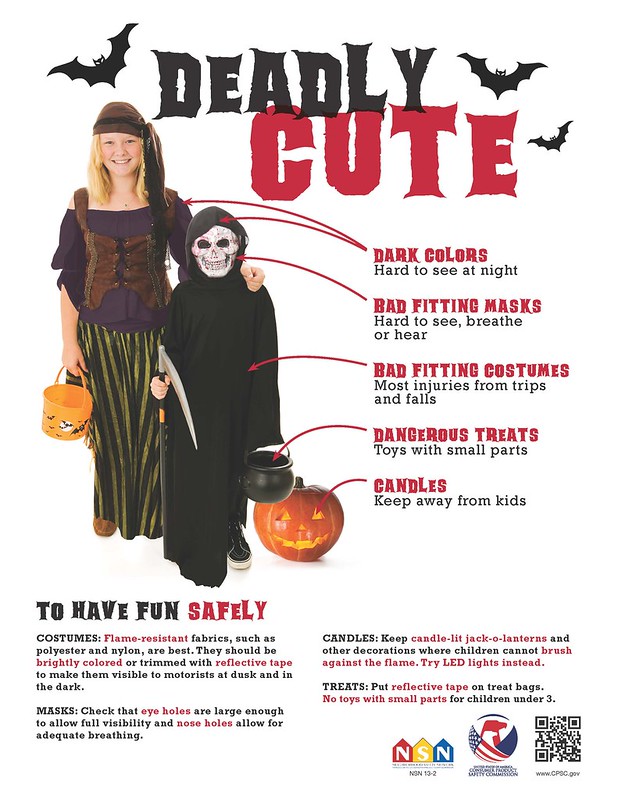Pumpkin Carving

Before you carve out the scariest jack-o’-lantern in the neighborhood, read CPSC’s tips to prevent nicks and cuts this Halloween. During October and November 2013, more than half of the estimated 4,400 Halloween-related injuries involved pumpkin carving.
- Kid helpers can grab a spoon and scoop out the inside, or use a marker to trace the template, but leave the carving to the adults.
- When the masterpiece is carved, consider inserting a battery-operated light rather than an open-flame candle.
Costume Creating
Has your little one requested to be a fairy with a long, flowing dress? Or is the request for a superhero with the best cape ever? Regardless of the type of costume you create this Halloween, CPSC urges you to begin crafting with safety in mind.
- When selecting fabric, use bright colors of polyester or nylon. Natural fibers, such as cotton, can burn fairly quickly, if there is contact with an open flame.
- Avoid baggy or oversized costumes. Many injuries last year involved trips and falls.

- Eye and nose holes in masks should allow for full visibility and adequate breathing. Makeup is a safer alternative.
- If purchasing a costume, mask, beard or wig, look for the flame resistant label. Although that label doesn’t mean the product will not catch fire, it should extinguish quickly or resist burning.
- Always use reflective tape as a trim for costumes and outerwear. A bright flashlight or glow stick can also help illuminate the trick-or-treaters.
- If you plan to disguise your eyes with decorative contact lenses this Halloween, the Food and Drug Administration (FDA) warns of serious eye damage. Follow the FDA’s safety tips to help prevent injury.
Creative Decorating

Lesson one for a Safe Haunted House is fire prevention. Prevent candle fires by substituting the open flame for battery-operated lights and glow sticks. Last year, CPSC received reports of fires involving Halloween-themed candles and a report of a house deemed a total loss after a decorative pumpkin went up in flames.
Lesson two is careful placement of decorations. To prevent falls, remove obstacles from lawns, steps and porches when expecting trick-or-treaters.
Lesson three, use CPSC’s ladder safety tips to prevent injuries while putting up or taking down decorations.
Lighting checklist:
- For indoor décor, keep candles and jack-o’-lanterns away from curtains, decorations and other combustibles that could catch fire. Never leave burning candles unattended.
- Indoors or outside, use only lights that have been tested for safety by a recognized testing laboratory. Check each set of lights, new or old, for broken or cracked sockets, frayed or bare wires, or loose connections. Discard damaged sets.
- Don’t overload extension cords.

Now that your costumes and decorations have been created and placed with safety in mind, the National Highway Traffic and Safety Administration (NHTSA) reminds you to take safe steps on Halloween night. Follow NHTSA’s pedestrian safety tips to help prevent injury.
Many thanks to CPSC for this informative article. http://onsafety.cpsc.gov/blog/2014/10/29/the-diy-halloween/
